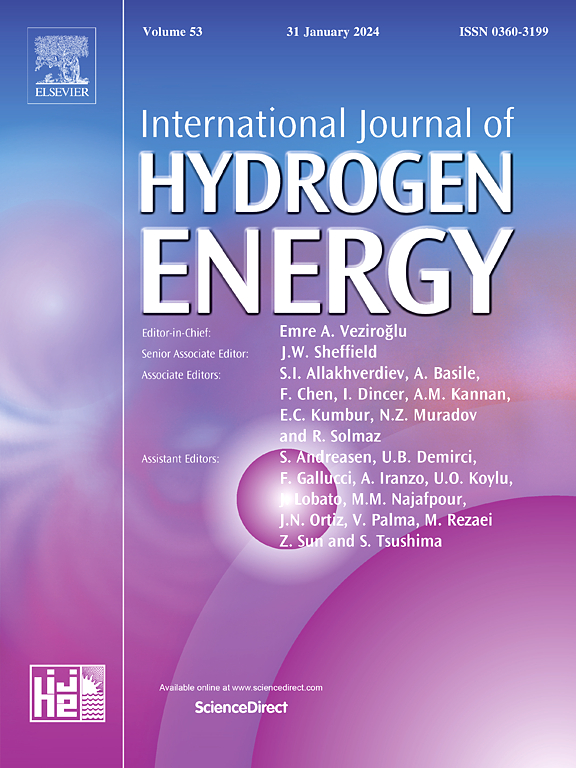4,4-Biphenyldinitrile covalent triazine framework CFT-2 loaded bimetallic oxides as effective electrocatalysts
IF 8.1
2区 工程技术
Q1 CHEMISTRY, PHYSICAL
引用次数: 0
Abstract
Covalent triazine frameworks (C0054Fs) are promising electrode materials due to their rigid bonds, high surface area, and porosity, addressing the challenges of poor stability and slow electron diffusion in traditional materials, therefore, this experiment proposes that CTF-2 prepared by 4,4-biphenyl dicarbonitrile is used for rechargeable zinc-air battery electrocatalytic materials. Notably, the electrochemical properties were improved by incorporating bimetallic oxides into the CTF-2 precursor, where each triazine ring and bimetallic oxide provided empty orbitals that could deliver electrons, which enhanced the electron transfer between the triazine ring and the metal ions, with the number of electrons transferred found to be close to 4 electrons by testing, and the half-wave potential of ORR in the electrolyte for the catalysts prepared in the present experiments (CoFe2O4@CN/CTF-2) is The half-wave potential of ORR in the electrolyte was 0.84 V similar to that of Pt/C, whereas the overpotential of OER was 330 mV, superior to that of Pt/C by 10 mA at a current density of 10 mA cm−2, thus demonstrating that the bifunctional electrocatalytic activity of the ORR/OER of CoFe2O4@CN/CTF-2 was obviously enhanced.

4,4-联苯二腈共价三嗪框架CFT-2负载双金属氧化物作为有效电催化剂
共价三嗪框架(C0054Fs)因其刚性键、高比表面积和孔隙率,是很有前途的电极材料,解决了传统材料稳定性差和电子扩散慢的难题,因此,本实验提出将4,4-联苯二腈制备的CTF-2用于可充电锌-空气电池电催化材料。值得注意的是,在CTF-2前驱体中加入双金属氧化物改善了电化学性能,其中每个三嗪环和双金属氧化物都提供了可以传递电子的空轨道,这增强了三嗪环和金属离子之间的电子转移,通过测试发现转移的电子数量接近4个。本实验制备的催化剂(CoFe2O4@CN/CTF-2)的电解质中ORR的半波电位为0.84 V,与Pt/C相似,而OER的过电位为330 mV,在电流密度为10 mA cm -2时比Pt/C高10 mA,从而表明CoFe2O4@CN/CTF-2的ORR/OER的双功能电催化活性明显增强。
本文章由计算机程序翻译,如有差异,请以英文原文为准。
求助全文
约1分钟内获得全文
求助全文
来源期刊

International Journal of Hydrogen Energy
工程技术-环境科学
CiteScore
13.50
自引率
25.00%
发文量
3502
审稿时长
60 days
期刊介绍:
The objective of the International Journal of Hydrogen Energy is to facilitate the exchange of new ideas, technological advancements, and research findings in the field of Hydrogen Energy among scientists and engineers worldwide. This journal showcases original research, both analytical and experimental, covering various aspects of Hydrogen Energy. These include production, storage, transmission, utilization, enabling technologies, environmental impact, economic considerations, and global perspectives on hydrogen and its carriers such as NH3, CH4, alcohols, etc.
The utilization aspect encompasses various methods such as thermochemical (combustion), photochemical, electrochemical (fuel cells), and nuclear conversion of hydrogen, hydrogen isotopes, and hydrogen carriers into thermal, mechanical, and electrical energies. The applications of these energies can be found in transportation (including aerospace), industrial, commercial, and residential sectors.
 求助内容:
求助内容: 应助结果提醒方式:
应助结果提醒方式:


